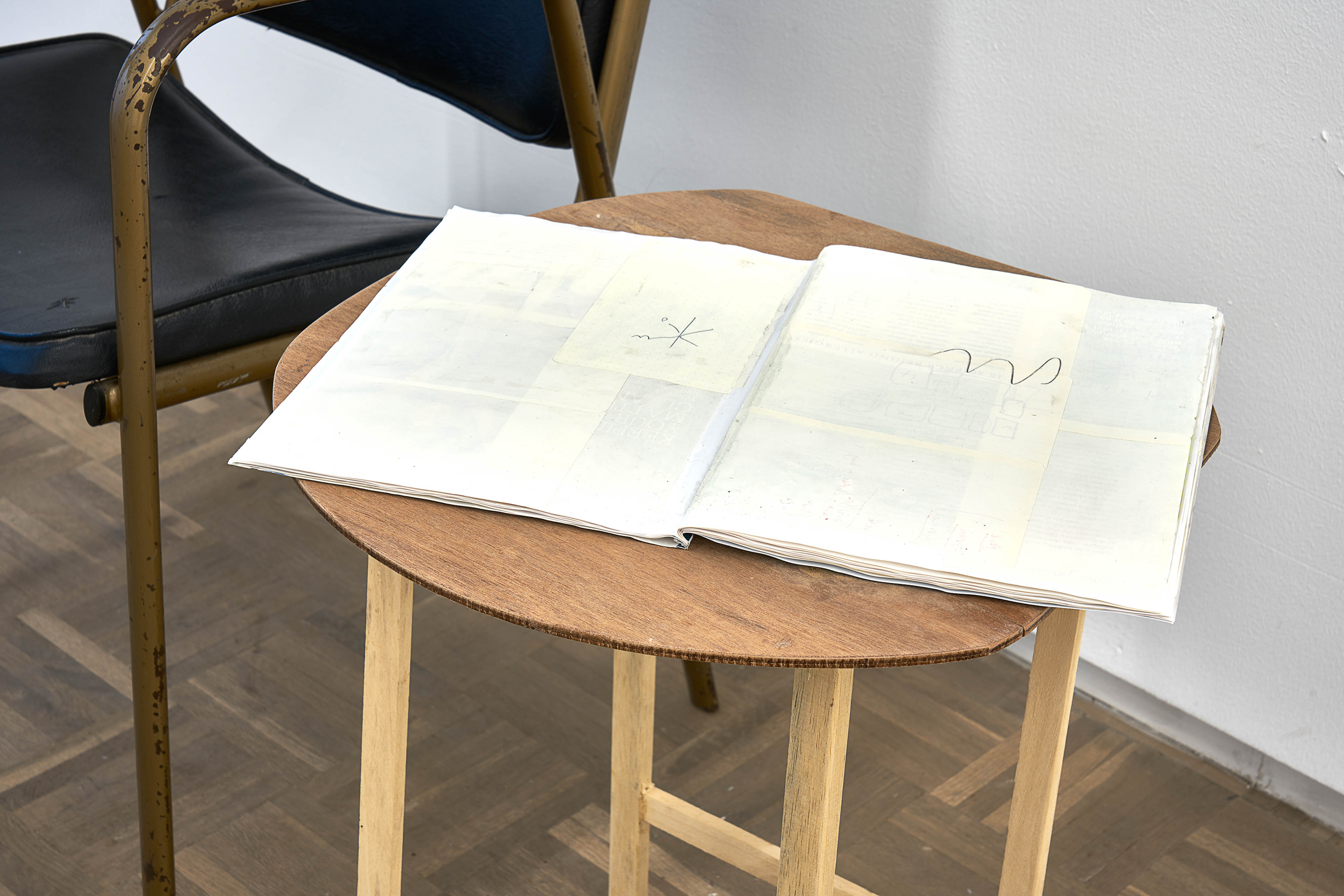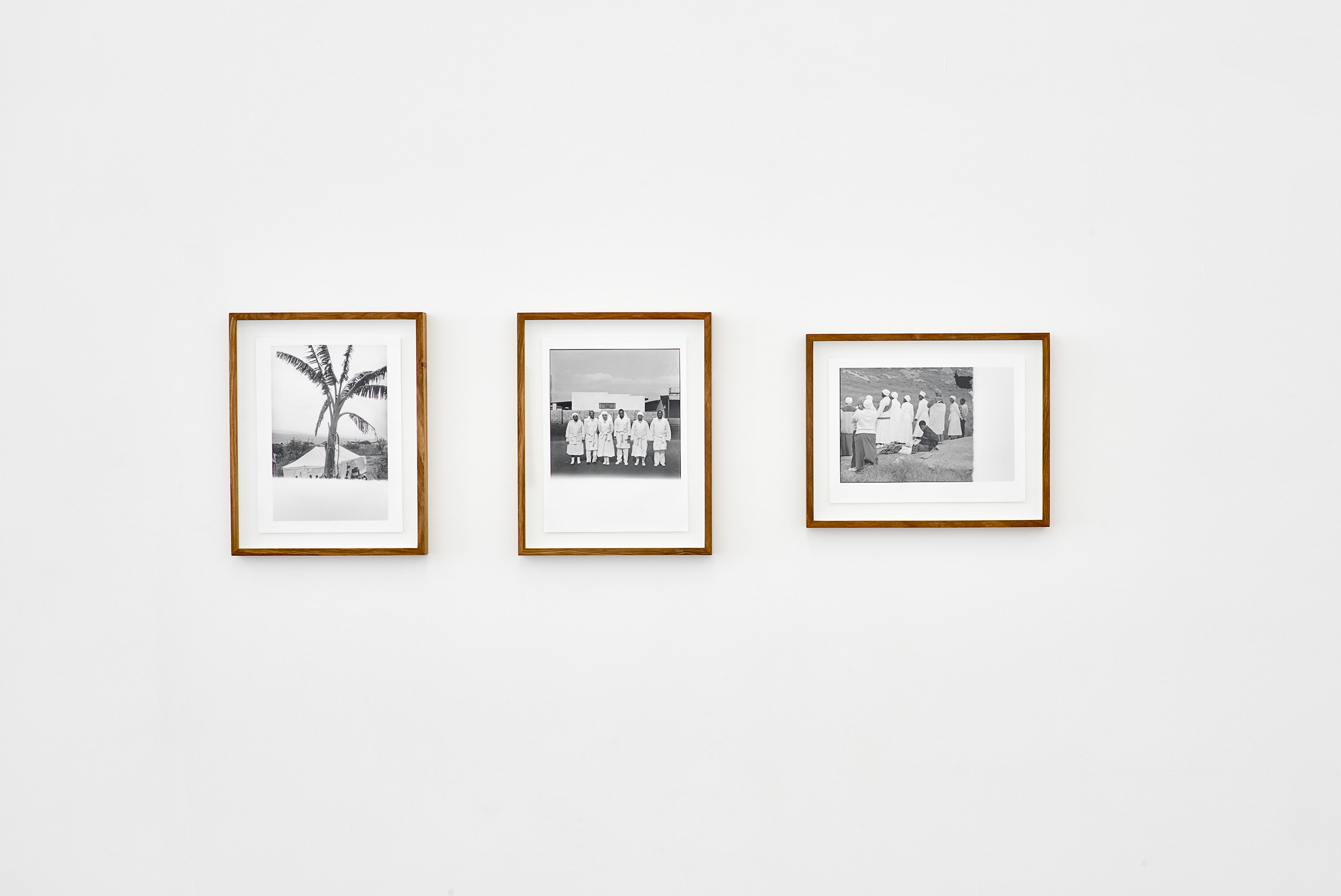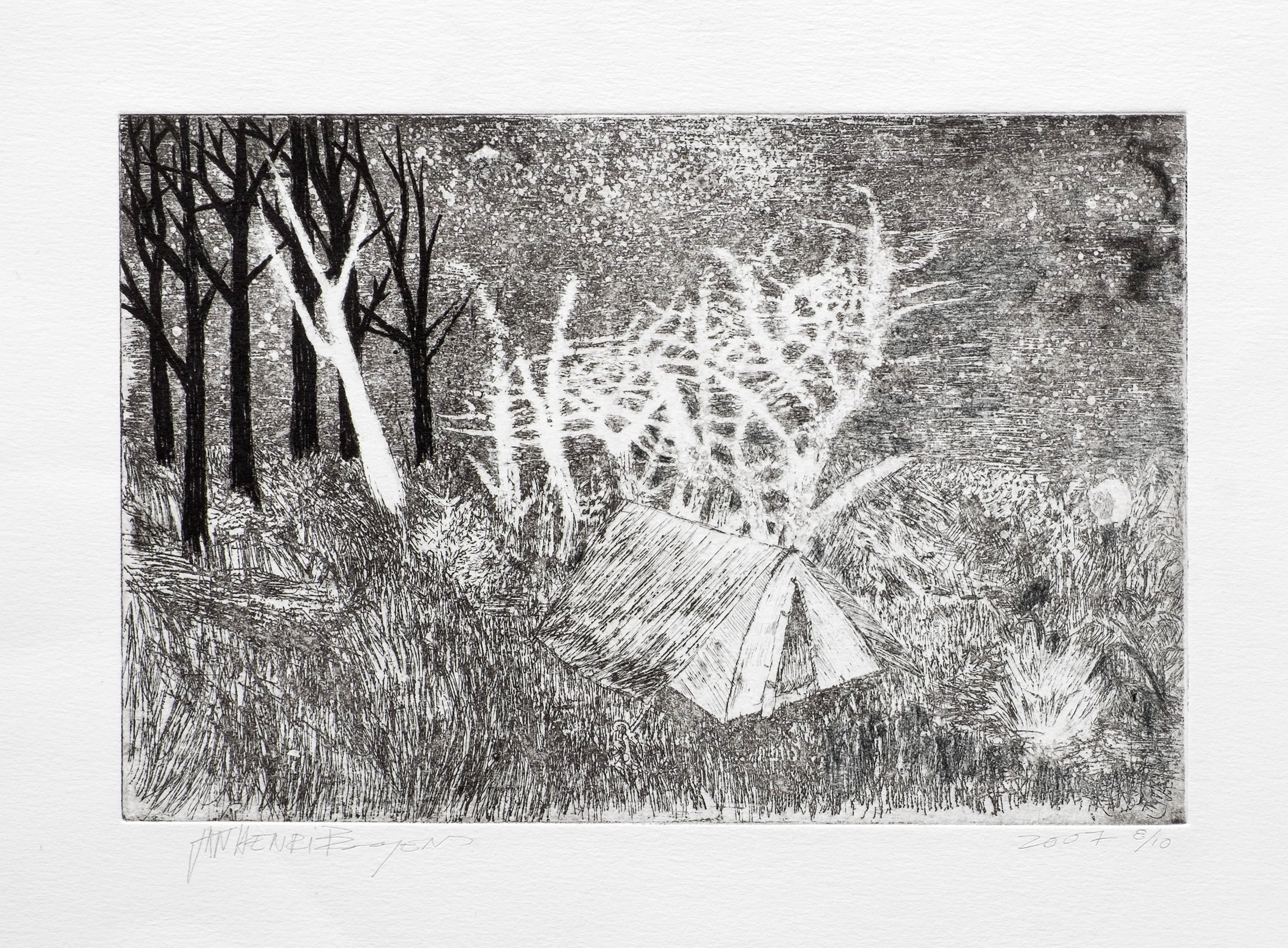





















blank is pleased to present open agenda, a group exhibition drawing together the practices of fourteen artists: Igshaan Adams, Jan-Henri Booyens, Jared Ginsburg, Dorothee Kreutzfeldt, Donna Kukama, Turiya Magadlela, Herman Mbamba, Sabelo Mlangeni, Kyle Morland, Cameron Platter, Cinga Samson, Gerda Scheepers, James Webb and Pedro Wirz.
Developed through discussions with the artists, open agenda reflects on some of their earlier working methodologies and thematics, creating new meaning in existing works, or repurposing old ideas in the case of new works. The exhibition offered pause to reflect, allowing for previously unrealised ideas and conversations to develop between artworks and practices. Through the inclusion of rare and seldom seen works, the exhibition creates space for unexpected encounters with the artists’ practices.
The exhibition was co-organised by Hannah Lewis, Catherine Humphries and Bonolo Kavula.
—
A selection of etchings by Jan-Henri Booyens dating from between 2007 and 2010 plots a timeline in the development of the artist’s visual language, moving between representational, abstract, and text elements, with Booyens’s signature motifs recurring throughout.
Referring to an earlier work exhibited in Cologne in 2006 titled A thing prepared, the wall-based sculpture by Gerda Scheepers breaks down the elements of painting and picture framing by creating an acute awareness of the borders (actual and conceived) and hierarchies inherent to them, and their shift into a merged whole, with a new reading of the relation between different elements. For this exhibition, Scheepers has reinterpreted the work with a large fabric collage that imitates the familiar visual forms of a landscape or flag, and the symbolic borders typical of their composition or design.
The common vein throughout the exhibition of revisiting older works is evident in Cinga Samson’s untitled still life of flowers, first begun in 2015 before the artist’s shift to self-portraiture. For the show, Samson returned to the painting in order to finally resolve it and the body of work it was originally part of.
A series of three earlier works by Turiya Magadlela, Nonkosi, Nongqawuse 2 and Nombanda (2015), are part of her larger body of work titled Kaffersheet which contemplates the history of incarceration of black leaders in South Africa. Composed out of strips of correctional service cloth smuggled out of prisons and commonplace cotton sheeting (known problematically as ‘kaffersheet’) the works are stitched together and stretched across frames in serene compositions that belie their fraught subject matter . Titled after female historical figures, they also make reference to the recurring theme of woman- and motherhood in Magadlela’s practice.
Also on exhibition is the residue of Know Thy Worth, an early text-based artwork by James Webb, installed at the gallery’s previous space in 2010 as part of his exhibition One day this will all be yours. Translated into Arabic as ‘E’raf Qeematak,’ the phrase is an adaptation of the Greek aphorism ‘Know thyself’ which adorned the entrance to the Oracle of Delphi. Making reference to the gallery’s proximity to District Six, a forced removals area formerly occupied by a large Islamic community, the work also draws attention to the increasingly aggressive gentrification of Woodstock, characterised by tenant evictions and building demolishment. Presented on this show as a documentation of itself, the artwork exists in the form of the original gallery signage; a fluorescent relic that speaks to Webb’s practice as much as to the gallery’s history.
Adaptable Form (2011) by Kyle Morland is a working mould for another work by the artist realised in 2009 – One Cubic Metre Concrete Block – it’s slatted timber construction still bearing the residue of the previously cast cement. Relating to the sculpture , a pair of black and white photographs by Morland depict two views of the Vanderkloof Dam in South Africa, part of his ongoing series documenting cast concrete dam walls around the country.
The oil-paintings of Cameron Platter, part of a larger body of work exhibited earlier this year, signal the artist’s return to painting after 17 years. Produced in a similarly automatic, freehand style to his charcoal and pastel drawings, Platter’s jubilantly colourful paintings have the same expressive quality of line recognisable throughout his multidisciplinary oeuvre.
A selection of older images from Sabelo Mlangeni’s ongoing body of work Umlindelo wamaKholwa (isiZulu for ‘the Night Vigil of the Believers’) documents the Zionist Christian church communities of rural Mpumalanga, where Mlangeni was brought up. Recently exhibited at the Wits Art Museum, the works are a portrait of life in the Church (of which the artist is himself a member), depicting groups of white-clad worshippers at ritual gatherings such as the baptism in Ukubhabhadiswa Umama Zulu neBandla (2003), unusually taken from behind the back-turned crowd. In another image, a large banana palm dominates the frame, obscuring the view of a tented church and rural scenery in the far distance – highlighting the importance of the “open landscape” in Zionism, and the relation between nature and spirituality.
Suspended from the gallery rafters, Igshaan Adams’s large-scale sculpture, Ontdoen, revisits the artist’s ongoing study of line in space, explored through his use of material (wire, thread, strings of burned beads) and process, which is defined by a continual doing, undoing and redoing. For Adams, the interest in the process lies in the difference between the original and the remade, and the impossibility of reconciling them.
Donna Kukama’s oil-stick drawing on paper forms part of the residue of a recent performance by the artist in Belgrade, as part of the city’s biennale. Titled Chapter Y: When our doors got up and left, the performance commemorated a small selection of plants that had survived Belgrade’s violent past, continuing the grow in the cracks of ruins. The performance is a fictional journey and a “Chapter” written by the plants themselves, as a contribution to her ongoing body of work. Proposed as a History Book that is not limited to the physical form of bound paper with written text, the body of work has taken the form of performances, text, objects, memories, drawing, installation, and soundings. Originally conceived as a tool for questioning and rethinking memorials, monuments, and national commemoration, the Book’s chapters physically revisit sites of violence (physical/discursive, personal/public) directed at and experienced by socially, structurally, and economically marginalised bodies.
Jared Ginsburg’s contribution to the exhibition is an installation of tables and chairs from the artist’s studio, placed in sets at intervals, upon which a selection of other objects can be found – the chairs providing opportunity for slow engagement with the objects placed on the table. Standard waiting room chairs, the history of their use is remembered within the work.
Made up of beeswax, hair, fibres and fabric and perched on a narrow pink plinth is a frog sculpture by Brazilian artist Pedro Wirz. Referring to the natural world but made with synthetic materials, Wirz’s recent works humorously decategorize constructs of organic/inorganic and culture/nature, collapsing them into one ‘ecosystem’ that reflects his upbringing in rural Pindamonhangaba, a region in Brazil steeped in myth, folklore and craft. This, together with the studies of his biologist parents that surrounded him growing up, is a major source of influence in his work, particularly his use of the frog as a signifier.
Laid out first as drawings in which the artist uses his whole body to carry intersecting lines across the surface of the canvas, the large-format abstract paintings by Namibian artist Herman Mbamba are composed of amorphic shapes that are a nod towards the figurative elements found in his earlier work.
In a new series of works on paper, titled Notes from the Bricklayer’s Yard, Dorothee Kreutzfeldt combines the process of drawing and collaging, etching and chine-collé. The works are based on a photograph taken by the artist in a suburb in Johannesburg as part of an ongoing practice of documenting urban surrounds and thinking through the lexicon of the environment, where fantasy house meets back yarding, offsetting the mundane elements of architecture that differentiate habitation. The series can be seen as a form of meditation, not yet concluded, beginning with a single moment and returning to soil, tissue and invisible labour.
Developed through discussions with the artists, open agenda reflects on some of their earlier working methodologies and thematics, creating new meaning in existing works, or repurposing old ideas in the case of new works. The exhibition offered pause to reflect, allowing for previously unrealised ideas and conversations to develop between artworks and practices. Through the inclusion of rare and seldom seen works, the exhibition creates space for unexpected encounters with the artists’ practices.
The exhibition was co-organised by Hannah Lewis, Catherine Humphries and Bonolo Kavula.
—
A selection of etchings by Jan-Henri Booyens dating from between 2007 and 2010 plots a timeline in the development of the artist’s visual language, moving between representational, abstract, and text elements, with Booyens’s signature motifs recurring throughout.
Referring to an earlier work exhibited in Cologne in 2006 titled A thing prepared, the wall-based sculpture by Gerda Scheepers breaks down the elements of painting and picture framing by creating an acute awareness of the borders (actual and conceived) and hierarchies inherent to them, and their shift into a merged whole, with a new reading of the relation between different elements. For this exhibition, Scheepers has reinterpreted the work with a large fabric collage that imitates the familiar visual forms of a landscape or flag, and the symbolic borders typical of their composition or design.
The common vein throughout the exhibition of revisiting older works is evident in Cinga Samson’s untitled still life of flowers, first begun in 2015 before the artist’s shift to self-portraiture. For the show, Samson returned to the painting in order to finally resolve it and the body of work it was originally part of.
A series of three earlier works by Turiya Magadlela, Nonkosi, Nongqawuse 2 and Nombanda (2015), are part of her larger body of work titled Kaffersheet which contemplates the history of incarceration of black leaders in South Africa. Composed out of strips of correctional service cloth smuggled out of prisons and commonplace cotton sheeting (known problematically as ‘kaffersheet’) the works are stitched together and stretched across frames in serene compositions that belie their fraught subject matter . Titled after female historical figures, they also make reference to the recurring theme of woman- and motherhood in Magadlela’s practice.
Also on exhibition is the residue of Know Thy Worth, an early text-based artwork by James Webb, installed at the gallery’s previous space in 2010 as part of his exhibition One day this will all be yours. Translated into Arabic as ‘E’raf Qeematak,’ the phrase is an adaptation of the Greek aphorism ‘Know thyself’ which adorned the entrance to the Oracle of Delphi. Making reference to the gallery’s proximity to District Six, a forced removals area formerly occupied by a large Islamic community, the work also draws attention to the increasingly aggressive gentrification of Woodstock, characterised by tenant evictions and building demolishment. Presented on this show as a documentation of itself, the artwork exists in the form of the original gallery signage; a fluorescent relic that speaks to Webb’s practice as much as to the gallery’s history.
Adaptable Form (2011) by Kyle Morland is a working mould for another work by the artist realised in 2009 – One Cubic Metre Concrete Block – it’s slatted timber construction still bearing the residue of the previously cast cement. Relating to the sculpture , a pair of black and white photographs by Morland depict two views of the Vanderkloof Dam in South Africa, part of his ongoing series documenting cast concrete dam walls around the country.
The oil-paintings of Cameron Platter, part of a larger body of work exhibited earlier this year, signal the artist’s return to painting after 17 years. Produced in a similarly automatic, freehand style to his charcoal and pastel drawings, Platter’s jubilantly colourful paintings have the same expressive quality of line recognisable throughout his multidisciplinary oeuvre.
A selection of older images from Sabelo Mlangeni’s ongoing body of work Umlindelo wamaKholwa (isiZulu for ‘the Night Vigil of the Believers’) documents the Zionist Christian church communities of rural Mpumalanga, where Mlangeni was brought up. Recently exhibited at the Wits Art Museum, the works are a portrait of life in the Church (of which the artist is himself a member), depicting groups of white-clad worshippers at ritual gatherings such as the baptism in Ukubhabhadiswa Umama Zulu neBandla (2003), unusually taken from behind the back-turned crowd. In another image, a large banana palm dominates the frame, obscuring the view of a tented church and rural scenery in the far distance – highlighting the importance of the “open landscape” in Zionism, and the relation between nature and spirituality.
Suspended from the gallery rafters, Igshaan Adams’s large-scale sculpture, Ontdoen, revisits the artist’s ongoing study of line in space, explored through his use of material (wire, thread, strings of burned beads) and process, which is defined by a continual doing, undoing and redoing. For Adams, the interest in the process lies in the difference between the original and the remade, and the impossibility of reconciling them.
Donna Kukama’s oil-stick drawing on paper forms part of the residue of a recent performance by the artist in Belgrade, as part of the city’s biennale. Titled Chapter Y: When our doors got up and left, the performance commemorated a small selection of plants that had survived Belgrade’s violent past, continuing the grow in the cracks of ruins. The performance is a fictional journey and a “Chapter” written by the plants themselves, as a contribution to her ongoing body of work. Proposed as a History Book that is not limited to the physical form of bound paper with written text, the body of work has taken the form of performances, text, objects, memories, drawing, installation, and soundings. Originally conceived as a tool for questioning and rethinking memorials, monuments, and national commemoration, the Book’s chapters physically revisit sites of violence (physical/discursive, personal/public) directed at and experienced by socially, structurally, and economically marginalised bodies.
Jared Ginsburg’s contribution to the exhibition is an installation of tables and chairs from the artist’s studio, placed in sets at intervals, upon which a selection of other objects can be found – the chairs providing opportunity for slow engagement with the objects placed on the table. Standard waiting room chairs, the history of their use is remembered within the work.
Made up of beeswax, hair, fibres and fabric and perched on a narrow pink plinth is a frog sculpture by Brazilian artist Pedro Wirz. Referring to the natural world but made with synthetic materials, Wirz’s recent works humorously decategorize constructs of organic/inorganic and culture/nature, collapsing them into one ‘ecosystem’ that reflects his upbringing in rural Pindamonhangaba, a region in Brazil steeped in myth, folklore and craft. This, together with the studies of his biologist parents that surrounded him growing up, is a major source of influence in his work, particularly his use of the frog as a signifier.
Laid out first as drawings in which the artist uses his whole body to carry intersecting lines across the surface of the canvas, the large-format abstract paintings by Namibian artist Herman Mbamba are composed of amorphic shapes that are a nod towards the figurative elements found in his earlier work.
In a new series of works on paper, titled Notes from the Bricklayer’s Yard, Dorothee Kreutzfeldt combines the process of drawing and collaging, etching and chine-collé. The works are based on a photograph taken by the artist in a suburb in Johannesburg as part of an ongoing practice of documenting urban surrounds and thinking through the lexicon of the environment, where fantasy house meets back yarding, offsetting the mundane elements of architecture that differentiate habitation. The series can be seen as a form of meditation, not yet concluded, beginning with a single moment and returning to soil, tissue and invisible labour.